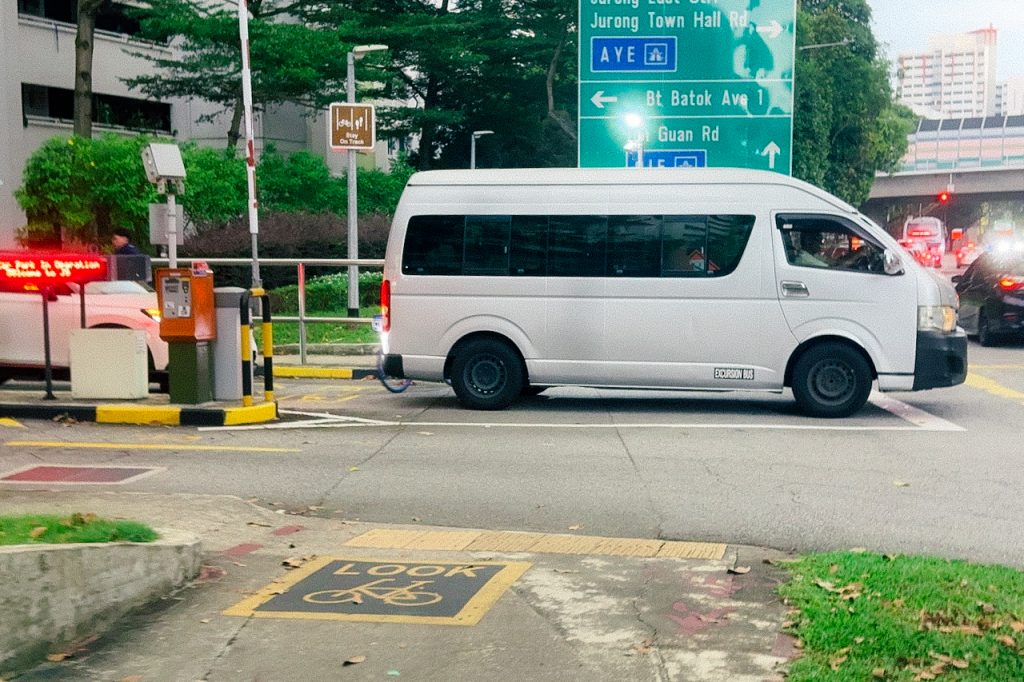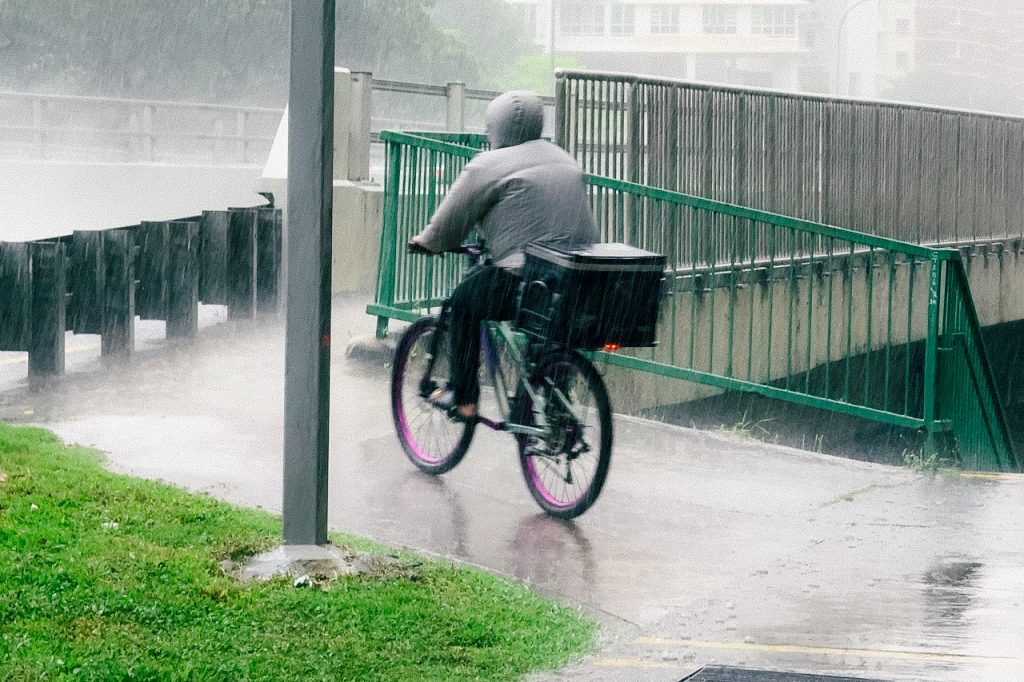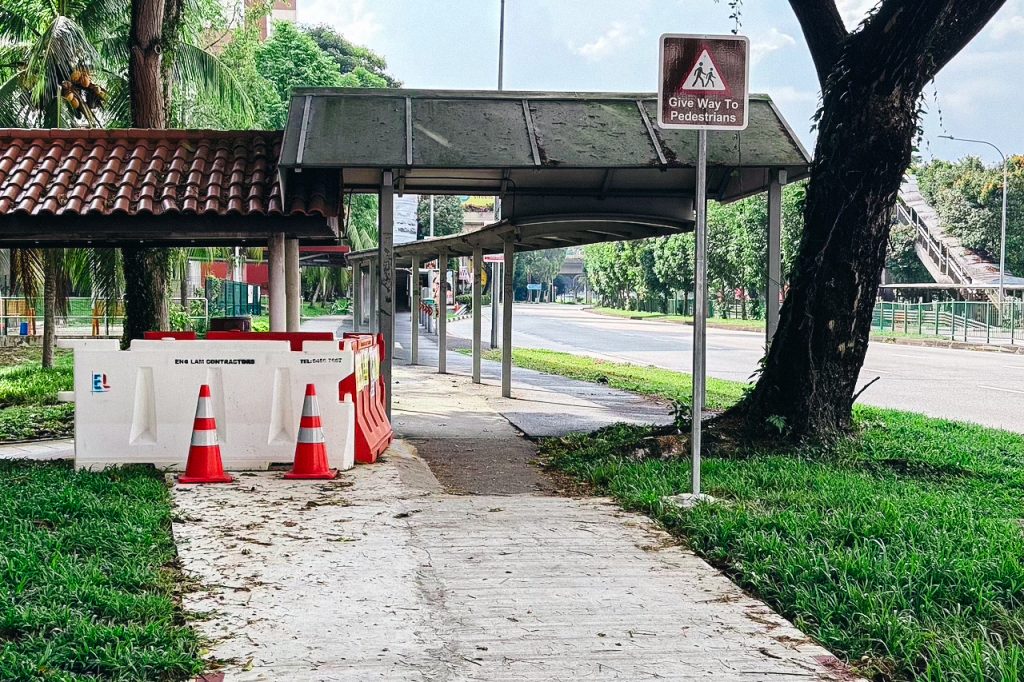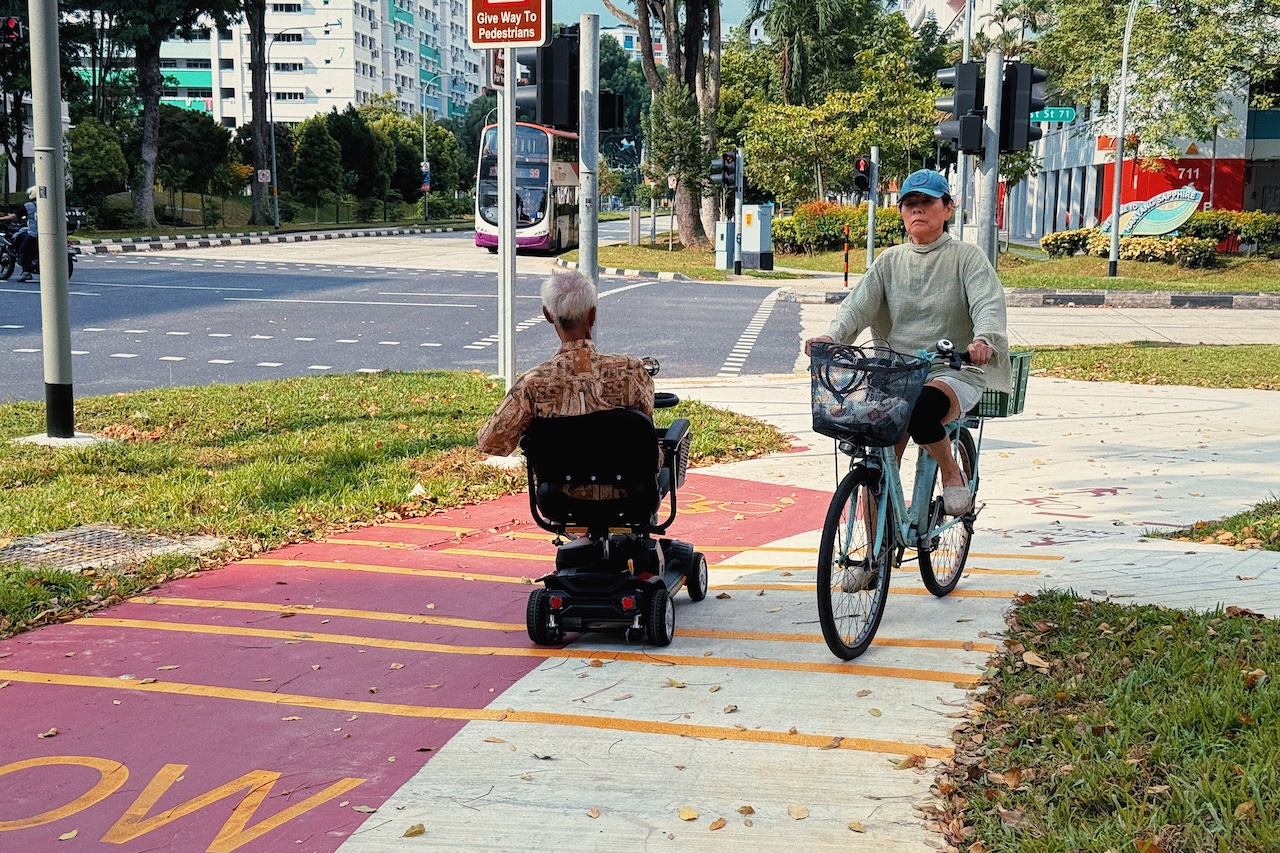Lim Ding Wen is a Computer Science student at Nanyang Technological University and a daily bike commuter. In this op-ed for RICE, Ding Wen shares his take on the state of Singapore’s cycling path network.
All images courtesy of the author.
Every time I see headlines announcing new cycling paths in Singapore, I should feel grateful. Yes, significant investment and planning have gone into these red-painted pathways. And to their credit, the Land Transport Authority (LTA) is serious about increasing the connectivity of our cycling paths across all towns.
But as someone who regularly navigates the city on two wheels, I can’t help feeling frustrated when the reality falls short of the promises. After years of cycling around the island, I speak from experience when I say our network is inconvenient, unsafe, and surprisingly costly.
The 1,300KM cycling network target sounds ambitious. On paper, it suggests we’re becoming a cycling-friendly city. But with the share of people who primarily cycle to work stuck below 2 percent, it’s hard not to wonder: what’s going wrong?
For daily commuters like me—especially those on e-bikes or riding above 10km/h—the answer is painfully clear. What Singapore calls a ‘cycling network’ is really just a patchwork of widened footpaths and pedestrian obstacle courses. It might satisfy the occasional weekend rider, but it utterly fails those serious about ditching their cars for bikes.

Of Chains and Weak Links
Pioneer Road North haunts me.
This treacherous stretch—a combination of Nanyang Technological University (NTU) students, impatient PIE traffic, and poorly designed cycling paths—has already claimed a cyclist’s life this year. I personally witnessed another accident that never made the news.
While authorities are adding new bike paths here, they’re often disconnected segments that require riders to repeatedly dismount. On Pioneer Road North, between the junctions where it meets PIE and Jurong West Avenue 5, there are more footpaths than cycle paths in length. This, to me, is inadequate.
This fragmentation is the norm across Singapore. It feels nearly impossible to travel any meaningful distance without the path abruptly ending, usually at bus stops, intersections, or bridges. Sometimes the red paint simply vanishes without guidance; other times, the shared path gradually narrows until it’s clearly just a footpath.

While slow recreational cyclists might manage by dismounting and walking, this creates a challenging situation for e-bike users and daily commuters.
To legally navigate these paths without stopping, we’d need teleportation abilities. Or, as most of us reluctantly do, abandon them entirely for the road and endure the stress of navigating alongside vehicles.
Consider this: no driver would use a road that randomly ends every few meters. Why should cyclists accept this standard?

Discomfort and Inconvenience
When cycle paths do exist, they rarely offer a direct route. They meander unnecessarily, especially at road crossings where they’re retrofitted to sit alongside existing pedestrian infrastructure.
Most cyclists don’t realise that legally, we must stop at every side road crossing—a rule so impractical that nobody follows it. Before each obstacle, bus stop, side road, and pedestrian priority zone, we encounter ‘SLOW’ markings with six thick paint strips designed to reduce our speed, then repeated on the other side.
On my daily commute, I encounter hundreds of these speed strips, not to mention countless drain covers and sharp turns with radii that don’t feel safe for the legal 25km/h limit.

The pedestrian crossing system creates additional inconvenience. Unlike many cycling-friendly cities, Singapore does not employ automatic pedestrian and cycling signal activation. Missing the crossing button often means enduring long waits under the sweltering sun—enough to tempt both pedestrians and cyclists to ignore the signal and cross anyway.
Too often, I’ve followed mapping apps only to find cycling paths blocked by construction, sometimes entirely, sometimes with a casual ‘dismount’ sign.
We’d never accept this for roads without proper detours. So why is it tolerated for cycling infrastructure?

Safety Concerns
For all their promise, many cycle paths come with serious safety flaws—some posing real risks of injury, even death.
Take, for instance, how we treat visually impaired pedestrians. Before road crossings, they’re given clear tactile warnings. But there’s often nothing to alert them when they’re about to step onto a cycling path, where bikes can zip by at speeds of up to 25km/h.
To me, the obvious and ideal solution is to create height differentiation and curbs, just like with roads.
However, the authorities are reluctant to do so, citing tripping hazards. This actually reveals another problem: inadequate width standards. When adjacent to cycling paths, dedicated footpaths are 1.5 meters in width on the basis that pedestrians can manoeuvre on cycle paths as well. But what this does is force vulnerable pedestrians onto cycling paths, creating potential conflict points.

Additionally, internationally recommended standards suggest a 2-meter width per cycling direction. Singapore’s cycling paths offer just 1 meter per direction— a width so narrow that no safety distance is built into the design. This may be even narrower due to the existence of older and substandard paths that are nonetheless counted into the 1,300km target.
So is it any wonder that cyclists ride on footpaths and pedestrians walk on cycle paths when neither space is adequate?
Boon Lay Way offers a rare exception, a 2.5 metre-wide wooden shared path that actually accommodates cyclists travelling in opposite directions. Yet even this relative success story fails at its endpoint near Lakeside MRT, where it abruptly transforms into a footpath at a junction.
Intersection design presents another serious safety concern. The current approach makes cyclists vulnerable to “left-hook” collisions and to drivers not anticipating cyclists crossing at speed. Better design reduces the chances of accidents caused by human error.
It’s something to consider when two cyclists have died at crossings this year: one crushed by a bus while using a zebra crossing, and another run over by a truck while crossing at a pedestrian crossing.

Financial Inefficiency
The economics make this situation even more frustrating. While Paris spent approximately S$0.44 million per kilometre on its successful bike path network (which supports 11.4 percent of trips by bicycle), Singapore spends about S$3.4 million per kilometre, nearly eight times more, for our largely inefficient system.
Building cycle paths by widening sidewalks requires relocating drains and infrastructure, making it exponentially more expensive than creating protected bike lanes on existing roads.
Simple solutions like adding planters or concrete barriers to convert a road lane into an “active mobility lane” would be far more cost-effective. Two-lane roads can be transformed by converting them to one-way vehicle traffic with bidirectional bike paths, or by restricting through traffic with barriers passable only by pedestrians and cyclists.

When questioned about on-road cycling lanes, the Ministry of Transport has maintained that such infrastructure is only feasible in areas with low vehicle traffic and that sidewalk-level cycling paths are safer for cyclists.
Both claims deserve scrutiny. As mentioned, sidewalk cycling and shared-use paths endanger pedestrians, while current intersection designs raise serious concerns about cyclist fatalities. Properly protected on-road lanes would go much further in addressing these safety risks.
When it comes to the issue of bike lanes and traffic congestion, international evidence tells a different story.
Studies consistently show that well-designed cycle lanes can actually reduce congestion through the principle of induced demand.
Widening roads sends a clear signal: driving is the default mode of transport. It encourages more people to drive existing cars and fuels aspirations of car ownership. In contrast, when road space is reallocated to proper cycling infrastructure, it communicates that alternative transport is not only viable but actively supported.
As someone who navigates both the Park Connector Network (PCN) and Cycle Path Network (CPN) daily, I make it a point to dismount on footpaths and keep under 15km/h in shared spaces.
Yet despite these efforts, Singapore’s heavy reliance on vague shared-use paths—many marked with sprawling Pedestrian Priority Zones—undermines the viability of cycling as a true commuting option. When routes abruptly end or force sudden detours, the road often feels like the only logical choice.

Pedalling Forward
We simply can’t afford to continue spending billions on unusable bike paths. We have ample opportunities to build a proper, cost-efficient cycling infrastructure.
In the meantime, existing paths need immediate improvements: continuous sidewalks, automatic signal systems for pedestrians and cyclists, smoother surfaces, better delineation between user spaces, and elimination of network gaps.
But most importantly, we need better metrics beyond simply measuring “kilometres of cycle paths”. True success should be evaluated by actual cycling adoption rates and comparative travel times between multi-modal trips and driving for typical journeys.
All this to say that what we currently have isn’t a cycling network—it’s a scattered patchwork of red pavements that seem to be more symbolic than functional. For a land-scarce city that cannot sustainably rely on cars, this is more than just an inconvenience. It’s a missed opportunity.
Because cycling isn’t just a lifestyle choice—it’s a practical solution to urban congestion, rising emissions, and the rising cost of living. But until we treat it with the seriousness we give to car infrastructure, we’ll keep failing those who genuinely want to make the switch.






